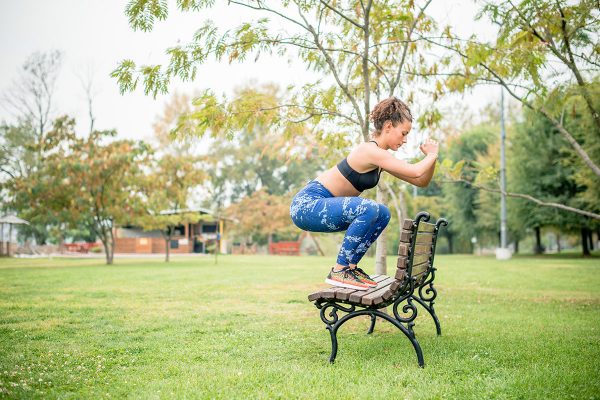Many types of multi-jump exercises help the runner gain power and strength. The idea is to jump in a controlled and planned way, being the technique something key to its execution. It is advisable to do so on a soft surface where grass or areas of land exist such as a park.
With multi-jumps, you can improve the power, something essential when it comes to making more difficult races equipped with climbs or slopes. However, if it is a matter of running on plain surfaces, these activities help prevent injuries and improve race technique and speed.
These multi-jump exercises for runners are some of the most popular when running with higher power and speed:
1. “Lame leg“
It is one of the great multi-jump exercise classics for runners. The idea is to keep the balance on one leg and jump while keeping the other slightly up. Naturally, you should not forget to repeat the exercise with the other leg.
2. Vertical jumps
Vertical jumps are another of the most common exercises between experienced runners or even athletes. It’s about including an obstacle in front of the corridor, such as a fence, and overcoming the obstacle with both legs. The idea is to take your knees as much as possible to your chest and look in front as you run.
3. Jumps with Foot Together or Kangaroo
This is another of the great classics that exists. It consists of imitating the kangaroo’s jumps, that is, jumping with your feet together and covering as much extent as possible, but without lifting your feet too much off the ground.
4. Double squat jump
It consists of jumping and taking your knees to your chest from a squat position. However, to avoid the risk of injury it is important to keep the chest firm, the hips back and the knees are not beyond the toes. Breathing and inhaling while squatting and exhaling while putting pressure on the heel is also important to jump.
5. Multi-jumps with bench
With a bank, the possibilities are wide. First, with your feet together, go up and down the bench. After this exercise, there is the possibility of jumping from one side to the other over the bench with your feet together. In the same way, you can also jump by placing a single foot on the bench or even jumping two feet together on several benches.
6. Exercises With Jumping Boxes or Plinths
These exercises require a somewhat more advanced level of execution, although they can also be adapted to corridors that are beginning. One of these exercises is to go up and down to jump from a drawer at different heights. It is also possible to make lateral plinth jumps through hand support or even one hand. Likewise, squatting and jumping to the plinth (at a low height) to jump again.
Multi-jump exercises for runners should be performed properly, even more so when we increase the intensity level without adequate progression. The ankle should bear a great weight and, in addition, given the instability generated, various problems can arise from twists to hip or knee injuries.
